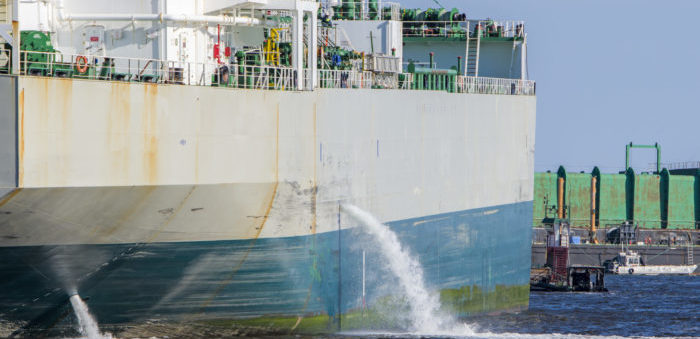In order to prevent harmful aquatic organisms and pathogens that get into ships’ ballast water, cause pollution and damage to the ecological environment and human health, China officially acceded the International Convention on the Control and Management of Ballast Water and Sediments on Ships, 2004 in 2018. To assist ship owners and operators understand and comply with this new regulation, Huatai has prepared a circular to introduce the main contents of the requirements.
Firstly, these measures apply to ocean-going vessels which are sailing, berthing and operating in waters under Chinese jurisdiction. More specifically, ships must be equipped with relevant certificate documents, such as:
- International Ballast Water Management Certificate issued by the competent authority or its authorized ship inspection institution;
- Ballast Water Management Plan, which shall conform to the actual operation of the ship and be issued by the competent authority or its authorized ship inspection institution;
- The Ballast Water Record Book , which shall include at least the time, latitude and longitude of the operation of ballast water and the types of operation of ballast water;
- Vessels installed ballast water management systems shall also hold copies of the Ballast Water Management System Type Accreditation Certificate;
[smlsubform prepend=”GET THE SAFETY4SEA IN YOUR INBOX!” showname=false emailtxt=”” emailholder=”Enter your email address” showsubmit=true submittxt=”Submit” jsthanks=false thankyou=”Thank you for subscribing to our mailing list”]
Moreover, vessels that need replacement of ballast water according to the requirements of the Convention, must conduct a replacement of ballast water in waters at least 200 nautical miles from the nearest land and at least 200 metres in water depth. If the voyage is less than 200 nautical miles, replacement may be performed in waters at least 50 nautical miles from the nearest land and at least 200 metres in water depth, unless China has alternative agreement with the relevant neighboring country.
The contents of surviving aquatic organisms in ballast water discharged from vessels requiring treatment of ballast water, based on the Convention, must comply with the following requirements:
- There are less than 10 living aquatic organisms with a minimum size greater than or equal to 50 microns per cubic meter of water;
- There are less than 10 living aquatic organisms with a minimum size of less than 50 microns per milliliter of water and larger than or equal to 10 microns;
- Vibrio cholerae is less than one colony-forming unit per 100 ml; Escherichia coli is less than 250 colony-forming units per 100 ml; and Enterococcus is less than 100 colony-forming units per 100 ml.
In addition, the senior crew responsible for ballast water and sediment management must complete the records and sign them in the Ballast Water Record book, and the captain must sign each page after completion. Records in the Ballast Water Record book should be filled out in the working language of the ship. If the language is not English, French or Spanish, each record shall be translated into one of above languages. The ship shall also maintain the used Ballast Water Record book on board for two years, and then for three years in the company to which it belongs.
Furthermore, ships which discharge ballast water must report to the local MSA 12 hours in advance. After berthing, the vessel or its agent shall submit the Ballast Water Report Form to the local MSA when handling the declaration of the import port of an international voyage vessel.
Finally, where ballast water and sediments are discharged without treatment or do not meet the standards, vessels must submit them to units with receiving and processing capacity for receiving and processing. The receiving and processing unit will then have to issue a ballast water or sediment receiving document to the ship. After the completion of the receiving operation (confirmed by captain’s signature), vessels should keep the receiving documents together with the Ballast Water Record Book. Receiving and treating ballast water and sediments must not pollute the ecological environment of the waters.
See more information in the PDF herebelow



































































